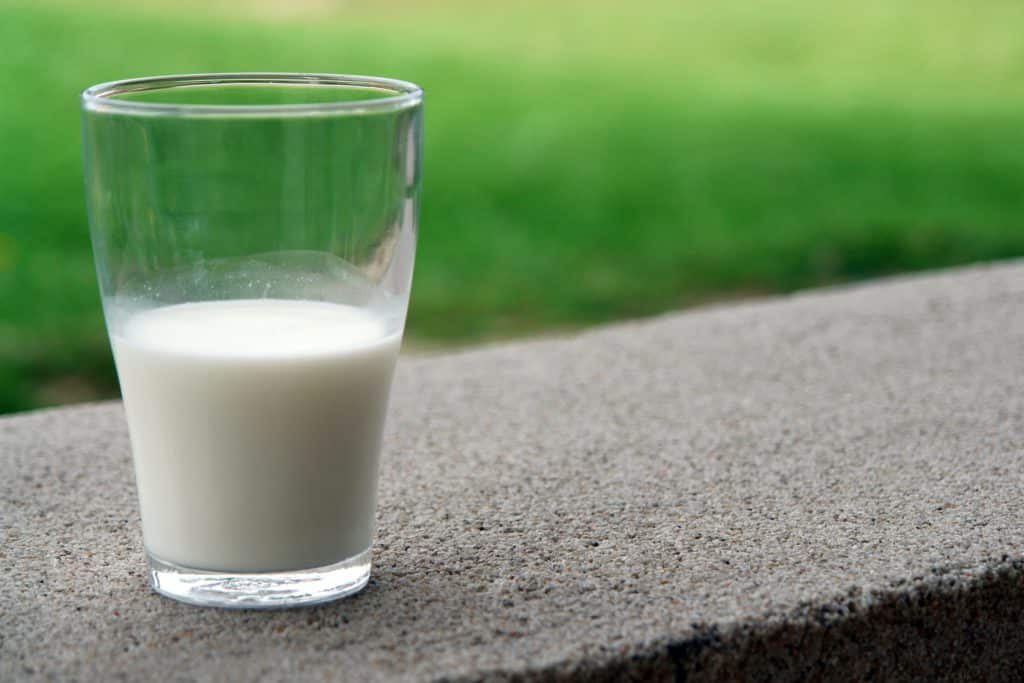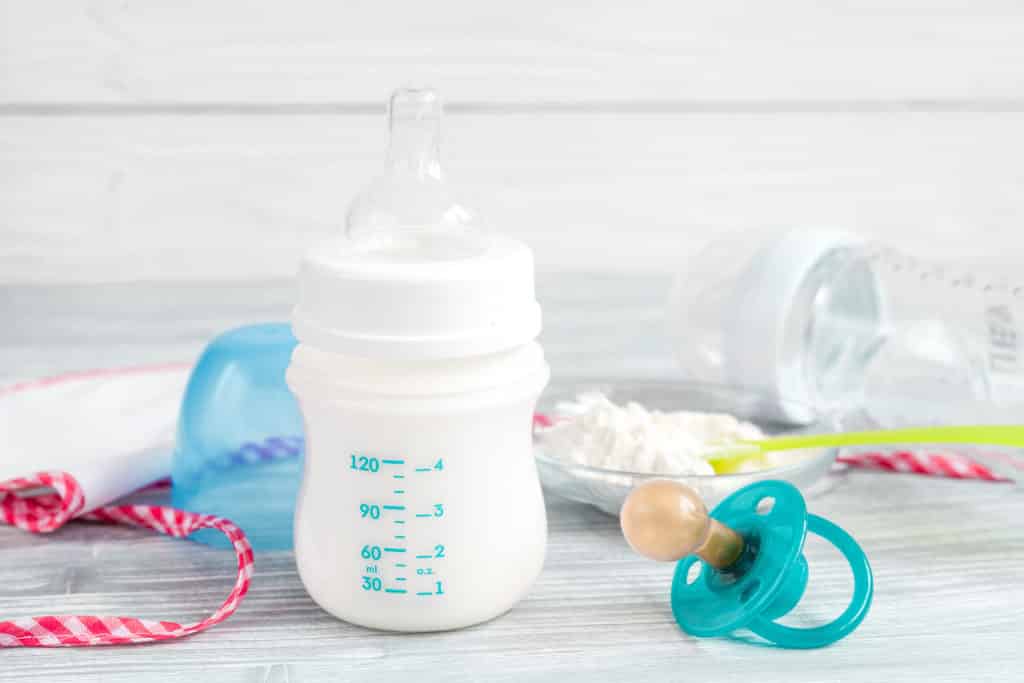Babies grow at a remarkable rate from the moment they are born. Mothers often worry about selecting the best formula to meet their babies’ needs. Once chosen, you may feel a bit nervous about how to prepare and store this formula safely.

A lot of nutrients are required to support the amazing growth rate of babies. The best way to provide your baby with these nutrients is through breast milk. However, some situations where challenges to breastfeeding exist necessitate formula feeding. It’s also become increasingly popular in recent times.
In plain terms, this is the feeding of an infant or toddler with a prepared formula. This formula can be used to feed your baby on its own or to supplement breast milk.
What Nutrients Are Present In Formula
Whether from breast milk or formula, some basic nutrients and vitamins that your growing child needs to stay healthy are:
- Calcium: For strong teeth and bones.
- Fat. Provides energy and protection against infections. Also helps with brain development and maintenance of healthy skin and hair.
- Folate. Helps in growth and development.
- Iron. This aids brain development and building of blood cells.
- Protein and Carbohydrates. Serves as a source of energy and fuel for your growing baby.
- Zinc. Encourages cell growth and repair.
- Vitamins: Vit. A, B1, B2, B3, B6, B12, C, D, E and K are essential for healthy skin, hair, vision, blood cells, brain, immune system, bones, teeth, muscles, e.t.c.

Although most infant formulas are gotten from cow’s milk, they are enriched with the necessary nutrients. Whether your situation makes the use of formula from the start necessary or to introduce it to your baby later on, you will likely have a lot of questions.
How do I choose the best formula for my baby?
How do I prepare and store my baby’s formula?
What formula is right for my baby’s age?
Is my baby getting enough milk?
In this article is all the information you need to know about infant formula. Determining your baby’s hunger and satiety cues will also help to make this journey easier.

Types of Infant Formula
The three main types of infant formula are:
1. Cow Milk Protein-Based
This is the most common type of infant formula available as most formulas are made from cow’s milk. These formulas have been fortified to contain the right amount of nutrients that would support your baby’s growth. In addition, they are formulated to make it easier for your baby to digest. However, some babies are allergic to the proteins in cow’s milk and thus need other types of formula.
2. Soy-Based
These are perfect for babies who are allergic to cow’s milk formula. Occasionally, a baby may be intolerant of both cow’s milk and soy milk as well. In this case, another kind of formula is needed.
3. Protein Hydrolysate Formulas
Protein hydrolysate formulas are best suitable for babies who have a protein allergy and cannot digest either cow or soy milk. The proteins in this formula have been broken down into smaller components that such babies can tolerate.
Apart from these 3, there are special formula preparations for infants who are born preterm or have special health conditions.
How are they sold?
There are 3 preparations of infant formula that you can choose from based on what suits you best. These include:
Powdered Formula
This is the most common and affordable. It comes in powder form that needs to be dissolved with water.
Concentrated Liquid Formula
Even though it’s in liquid form, this formula preparation is also required to be mixed with water before feeding your baby.
Ready-to-Use Formula
Just like the name implies, this is ready-to-use to feed a baby. It does not need to be prepared with any water. It is the most convenient type of infant formula. However, it’s also very expensive.
AGE SPECIFIC FORMULA
Based on age, infant formulas can be classified into 3 stages;
Stage 1 ( 0-6 Months)
This infant formula is creamy and attempts are made to make it similar to breast milk. In addition, contains starch as well as lactose and would keep your baby full.
Stage 2 (6 Months Onward)
You may notice that this formula is creamier than stage 1 formula and contains more energy. You are to begin this formula when your baby is ready to start eating baby food. Depending on your preference, it can either be fed to your baby alone or used to supplement baby food. This formula will leave your growing baby more satisfied with his/her food.
Stage 3 (10 Months Onward)
This final formula is contains more starch, nutrients and energy to suit your growing baby’s needs.
How to Prepare Your Baby’s Formula
- Remember to wash your hands well before preparing your baby’s food.
- Clean and sanitize the area where you plan to make your baby’s food.
- Wash and sterilize your baby’s bottles and other feeding utensils.

- If you are using powdered formula:
1) Use water from a safe source to prepare your baby’s formula. It is advisable to use distilled or boiled water. Please, do not use sachet water.
2) Check the instructions on the formula container for the quantity of water to use. Most feeding bottles come calibrated and can be used to get an accurate measurement. Please use the exact amount stated because:
- Too much water can make the preparation too dilute and unable to meet your baby’s nutritional needs.
- Too little water can make the preparation too concentrated. This would cause your baby’s organs to work extra hard, leaving your baby dehydrated and or constipated.
Storage
Use the prepared formula quickly or store it immediately.
- Unopened infant formula should be stored indoors in a cool and dry place. Do not put your baby’s formula in your vehicles, garage, or any other place outdoors for a long period of time.
- Always make sure you check the expiry date on the container of the infant formula before you use it.
- Use it within 2hours after you prepare it or 1hour after you start feeding your baby. Do not leave your prepared formula out at room temperature longer than this. It would get spoilt.
If you are mixed feeding, follow this link to learn more about storing breastmilk.
Finally,
- If you do not plan on using your prepared formula within 2hours, store it in the fridge immediately and use within 24hours.
- Use warm water to heat up your baby’s formula. You can place it for a few minutes under running warm water, or place it in a bowl of warm water. Never use a microwave to warm your baby’s formula.
- Before you feed your baby, pour a few drops on the back of your hand to make sure it is not too hot.
- Get rid of any remnant formula after feeding your baby and wash the feeding bottle immediately. The combination of the formula and your baby’s saliva can allow bacteria to grow, making it unhealthy for your baby’s consumption.
- Make sure you clean and sterilize the feeding bottles before each feed.
Although no formula can truly replicate breast milk, modern formulas provide a close alternative where a mother chooses not to breastfeed or breastmilk from a mum or a donor is unavailable.
Bottle feeding moments are amazing opportunities for you and your baby to get closer and to know each other more.

Also, bottle feeding allows your partner and other family members to help you with some of the feeding sessions so you can rest or return to work. If for any reason your baby doesn’t like bottles, you can learn about alternative ways of feeding baby
REFERENCES
- Center for Disease Control and Prevention 2018, Infant Formula Preparation and Storage, Center for Disease Control and Prevention, Viewed on August 9, 2020, <https://www.cdc.gov/nutrition/infantandtoddlernutrition/formula-feeding/infant-formula-preparation-and-storage.html>.
- Elana Pearl Ben-Joseph 2015, Formula Feeding FAQs: Preparation and Storage, Kids Health, Viewed on August 9, 2020, <https://kidshealth.org/en/parents/formulafeed-storing.html>.
- Wells, J.C.K. Nutritional considerations in infant formula design.Seminars in Fetal & Neonatal Medicine, 1(1): 19–26 (February 1996).
- World Health Organization. Global strategy for infant and young child feeding. Geneva, 2003. Retrieved August 8, 2011.
- “Infant and Young Child Feeding and Care”. UNICEF. Retrieved June 8, 2007.
- World Health Organization. Guidelines for the safe preparation, storage and handling of powdered infant formula. Geneva, 2007.
- Shutterstock

